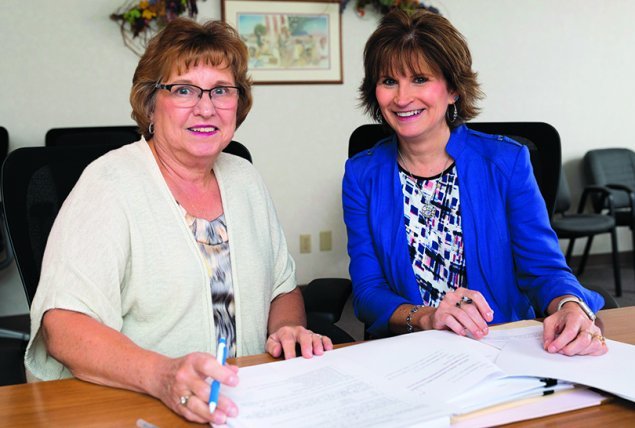
When presented with the issue of the state of South Dakota not having enough nurses to administer insulin to diabetic school-age children, Gloria Damgaard ’88 M.S. and Linda Young ’87/’96 M.S. went to work.
“The American Diabetes Association was actively pushing for a bill to allow unlicensed providers to administer insulin in our state,” said Young, a nursing program specialist with the South Dakota Board of Nursing and program director for the South Dakota Center for Nursing Workforce. “Our nursing ‘house’ was divided so we agreed to study the subject.”
After writing a grant proposal, they set up a pilot study, Virtual Nursing Care for Children with Diabetes in the School Setting, which ran from Dec. 1, 2010, through May 31, 2013. The study had nurses train and work with unlicensed individuals, using telehealth technology, at select schools to administer insulin and delegate and supervise diabetes care tasks.
During the study, more than 5,500 insulin doses were administered. Surveys taken before and after implementation measured the perceptions of parents and school personnel regarding the safety and efficacy of the model of care. Statistical results showed large degrees of effectiveness.
Create standards
“We wrote a grant to the national council of state boards of nursing for funding of a research project, set up hubs in the two major hospitals in Sioux Falls and then oversaw the nurses training unlicensed individuals in the schools,” Young said.
“We worked with a team of nurses to create standards for implementation, and to develop a training program, standardized exams and a registry of trained unlicensed diabetes aides. What spoke to me was keeping the nurses engaged in the process.
“We needed to bring all of the stakeholders together to give us input on how to improve the care of children with diabetes,” she continued. “All of that information was key and instrumental in moving the policy forward. We were able to make policy decisions based on the evidence from the study.”
The two wrote three articles on the study, all published in the Journal of Nursing Regulation.
“The first one reported the results, the second was on the implementation of the new policy, and the third one was how we used an evidence-based model to make policy decisions,” said Damgaard, the executive director of the South Dakota Board of Nursing. “In case there comes a time when we might not have enough registered nurses to deliver health care, which I hope never happens, our study has shown how we can really add significant number of qualified people to our workforce.”
Adaptable work
Young hopes the model can work elsewhere.
“For example, the virtual nursing-care model could work in Hawaii, as you have people located on different islands, or in other states with large, sparsely populated areas,” she said.
“What really impacted me throughout the process was the calls I received from parents and families in regard to diabetes. Some of them had to drive a minimum of 20-30 miles to school to administer insulin because there wasn’t a nurse. We heard how school administrations didn’t have the finances for a school nurse,” she continued. “Those stories drove me to help them find solutions and think of it in terms of what would I want for my child, how can we get nurses there and if that’s not possible, what else could we do? Our goal is to really try to help patients and others get access to quality providers. We kept that our focus and did that in this case.”

